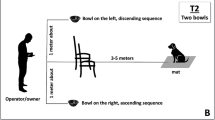Summary
Activity patterns were analyzed in house finches which were pinealectomized and subsequently implanted with melatonin capsules. Most pinealectomized house finches showed loss of circadian perch-hopping rhythms in constant darkness (DD). Total amount of activity in DD was about 175% higher in pinealectomized than in intact finches. In a light-dark cycle (LD) with 8 h L and 16 h D, activity in pinealectomized birds was redistributed such that an increase in activity during phase lead counter-balanced a decrease during L. Mean duration of phase lead increased from 1/2 h in intact finches to about 3 1/2 h in pinealectomized birds.
Melatonin capsules implanted in pinealectomized finches shortened phase lead in LD and lengthened phase trail, suggesting a role for melatonin levels in setting the phase of the activity rhythm apart from phasic changes in melatonin release. Melatonin did not restore circadian rhythmicity in pinealectomized finches and instead was associated with a decline in signs of residual, damped rhythmicity. Amount of 24-h activity was positively correlated with percentage of total activity occurring during daytime; both of these were inversely correlated with melatonin dosage. In pinealectomized finches, the amount of DD activity correlated positively with phase lead activity in LD, but not with amount of activity during L. The data are interpreted in terms of the hypothesis that phase lead represents a component of activity rhythms governed by a damped oscillator of non-pineal location but influenced by melatonin.
Similar content being viewed by others
Abbreviations
- LD :
-
light-dark cycle
- DD :
-
constant darkness
- L :
-
light portion of the light-dark cycle
- D :
-
dark portion of the light-dark cycle
References
Barchas J, DaCosta F, Spector S (1967) Acute pharmacology of melatonin. Nature 214:919–920
Binkley S (1977) Constant light: effects on the circadian locomotor rhythm in the house sparrow. Physiol Zool 50:170–181
Binkley S, Kluth E, Menaker M (1971) Pineal function in sparrows: circadian rhythms and body temperature. Science 174:311–314
Binkley S, Kluth E, Menaker M (1972) Pineal and locomotor activity: levels and arrhythmia in sparrows. J Comp Physiol 77:163–169
Binkley S, MacBride S, Klein DC, Ralph GL (1973) Pineal enzymes: regulation of avian melatonin synthesis. Science 181:273–275
Binkley S, Stephens JL, Riebman JB, Reilly KB (1977) Regulation of pineal rhythms in chickens: photoperiod and dark-time sensitivity. Gen Comp Endocrinol 32:411–416
Bubenik GA, Brown GM, Grota LG (1976) Differential localization of N-acetylated indolealkylamines in CNS and the harderian gland using immunohistology. Brain Res 118:417–427
Ebihara S, Kawamura H (1981) The role of the pineal organ and the suprachiasmatic nucleus in the control of circadian locomotor rhythms in the Java sparrow,Padda oryzivora. J Comp Physiol 141:207–214
Gaston S (1971) The influence of the pineal organ on the circadian activity rhythm in birds. In: Menaker M (ed) Biochronometry. Natl Acad Sci, Washington DC, pp 541–548
Gaston S, Menaker M (1968) Pineal function: the biological clock in the sparrow? Science 160:1125–1127
Gwinner E (1978) Effects of pinealectomy on circadian locomotor activity rhythms in European starlings,Sturnus vulgaris. J Comp Physiol 126:123–129
Gwinner E, Benzinger I (1978) Synchronization of a circadian rhythm in pinealectomized European starlings by daily injections of melatonin. J Comp Physiol 127:209–214
Hendel RC, Turek FW (1978) Suppression of locomotor activity in sparrows by treatment with melatonin. Physiol Behav 21:275–278
MacBride SE (1973) Pineal biochemical rhythms of the chicken (Gallus domesticus): light cycle and locomotor activity correlates. PhD thesis, University of Pittsburgh
McMillan JP (1972) Pinealectomy abolishes the circadian rhythm of migratory restlessness. J Comp Physiol 79:105–112
Menaker M (1968) Extraretinal light perception in the sparrow, I. Entrainment of biological clock. Proc Natl Acad Sci USA 59:414–421
Menaker M, Zimmerman N (1976) Role of the pineal in the circadian system of birds. Am Zool 16:45–55
Pang SF, Ralph CL, Reilly DP (1974) Melatonin in the chicken brain: its origin, diurnal variation, and regional distribution. Gen Comp Endocrinol 22:499–506
Ralph CL, Pelham RW, MacBride SE, Reilly DP (1974) Persistent rhythms of pineal and serum melatonin in cockerels in continuous darkness. J Endocrinol 63:319–324
Simpson SM, Follett BK (1981) Pineal and hypothalamic pacemakers: their role in regulating circadian rhythmicity in Japanese Quail. J Comp Physiol 144:381–389
Takahashi JS, Menaker M (1979a) Physiology of avian circadian pacemakers. Fed Proc 38:2583–2588
Takahashi JS, Menaker M (1979b) Brain mechanisms in avian circadian systems. In: Suda M, Hayaishi O, Nakagawa H (eds) Biological rhythms and their central mechanism. Elsevier-North Holland, Amsterdam, pp 95–109
Turek FW, McMillan JP, Menaker M (1976) Effects on the circadian locomotor rhythm of sparrows. Science 194:1441–1443
Wahlström G (1975) Supersensitivity to the sleep-inducing effect of melatonin in pinealectomized canaries. Sleep Res 4:273
Wever RA (1980) Circadian rhythms of finches under bright light: Is self-sustainment a precondition for circadian rhythmicity? J Comp Physiol 139:49–58
Wright N, Preslock JP (1975) Melatonin inhibition of pineal enzymes inCoturnix quail. Neuroendocrinology 19:177–184
Zimmerman NH, Menaker M (1979) The pineal gland: a pacemaker within the circadian system of the house sparrow. Proc Natl Acad Sci USA 76:999–1003
Author information
Authors and Affiliations
Rights and permissions
About this article
Cite this article
Fuchs, J.L. Effects of pinealectomy and subsequent melatonin implants on activity rhythms in the house finch (Carpodacus mexicanus). J. Comp. Physiol. 153, 413–419 (1983). https://doi.org/10.1007/BF00612595
Accepted:
Issue Date:
DOI: https://doi.org/10.1007/BF00612595




